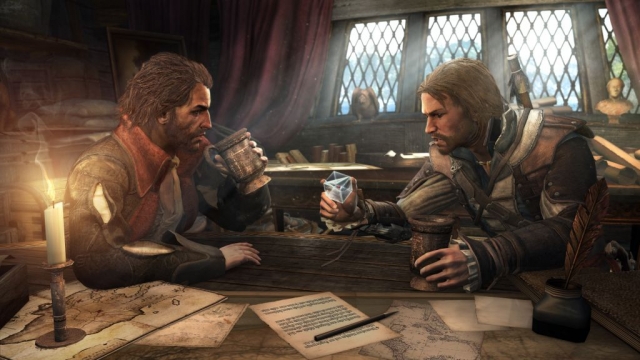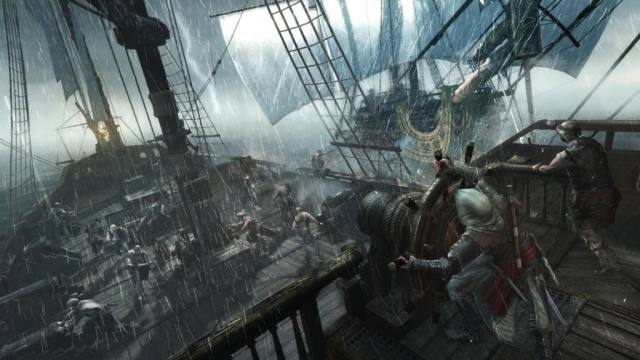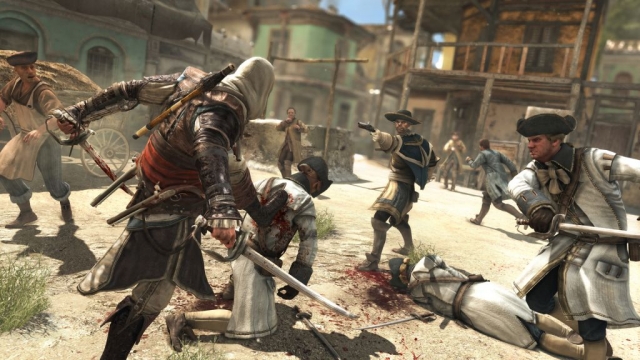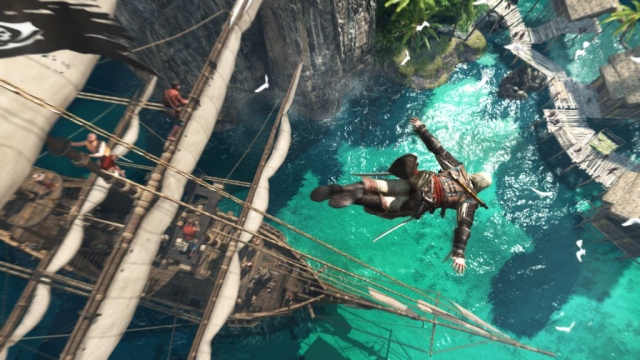Assassin’s Creed IV: Black Flag
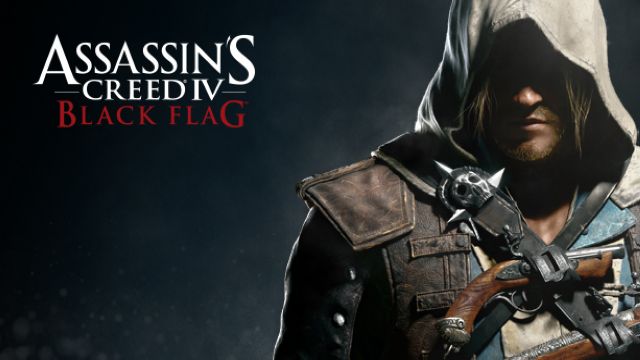
Edward Kenway is a man with a dream – to become a wealthy pirat…privateer – so he leaves behind his life in jolly ol’ England to embark on a seafaring adventure to the West Indies, but when he becomes embroiled in the power struggle between the Assassins and the Knights Templar, Edward eventually realizes that there’s more to life than getting your hands on a whole lot of booty. Aye, Matey, this is Assassin’s Creed IV: Black Flag.
Technically the sixth installment in the franchise (seventh if you count Liberation on the PlayStation Vita, coming soon to consoles), Assassin’s Creed IV: Black Flag is both a prequel and a sequel to Assassin’s Creed III. Taking place in the early 18th century during the Golden Age of Pirates, Edward Kenway’s story pre-dates the American Revolutionary tale of Ratonhnhaké:ton (Connor), but the meta-story continues after the events of Desmond Miles’ passing.
Edward Kenway is a very unique protagonist in the Assassin’s Creed series in that he’s not a member of the Assassin’s Guild. Sure, he looks the part, but that’s only because in the opening moments of the game he tracks down and kills an Assassin, taking and donning his outfit in a bold attempt to claim a reward that’s not rightfully his – like a true pirate. He eventually crosses paths with the Assassins, but even then he’s reluctant in helping their cause, remaining steadfast in his pursuit of fame and fortune on the high seas. It’s only towards the end of his tale – as Edwards learns a bitter lesson about the real treasure being the friendships he was making with his fellow pirates – when he finally does right by the Assassins.
I found Edward’s journey to be thoroughly enjoyable, though the story could have been a little tighter. The first two acts drag a bit and it’s only towards the end of the final act when Black Flag finally starts to sail at full speed. That being said, the writing continues to be one of the series’ strong suits. It’s nothing short of remarkable how the writers have managed to marry the real-world locations and famous pirates of the century – like Blackbeard, Calico Jack and Anne Bonny – with the fictional war between the Assassins and Templars.
Unfortunately the same cannot be said of the present day story. With Desmond out of the picture, you play as a faceless, voiceless employee of Abstergo, tasked with going through the memories of Edward Kenway so that Abstergo Entertainment can develop a video game and distribute a film based on the Golden Age of Pirates – which we know is a front. As far as progressing the meta-story, it doesn’t. It’s a filler episode with a most bizarre ending. There are a handful of these scenes to play through, each lasting roughly 5 minutes, though if you somehow find them interesting you do have the option of further exploring the halls of Abstergo Entertainment and hacking various terminals in order to learn more about the company.
In terms of gameplay, Black Flag is my favorite Assassin’s Creed game yet. Assassin’s Creed III was epic in scope, but its many elements didn’t quite come together to form a cohesive experience. Black Flag, on the other hand, manages to marry its campaign, side missions and activities – both land and sea – in a remarkably satisfying, challenging and rewarding way. Let’s start by heading out to sea.
One of the best new additions in Assassin’s Creed III was naval combat, an element that has been greatly expanded upon for Black Flag with roughly 40% of the campaign missions taking place at sea. It’s not long into the campaign before Edward Kenway acquires his own ship, the Jackdaw, and with it the ability to sail the Caribbean. You can use your spyglass to spot enemy ships, detect their cargo, and evaluate their offensive capabilities before choosing whether or not to attack them. If you cripple an enemy ship without sinking it, you can board it, defeat its captain and crew, and plunder its cargo (rum, sugar, metal, cloth and wood) to either sell at a harbormaster or use to upgrade the Jackdaw. The actual naval combat itself has been expanded to include level-based weaponry and a new trajectory-based aiming system.
That’s not all. You can attack and capture forts that act as synchronization points across the sea, revealing new locations and missions; you can purchase a dive bell and use it to search for lost treasure from shipwrecks that sit at the bottom of the sea; you can harpoon sharks and whales and use their skin and bones to craft holsters and darts (more on that later); or you can simply sail around listening to your crew sing a variety of sea shanties.
If you feel sea sick, dock at an assortment of islands big or small, or at a number of port cities such as Nassau, Havana and Kingston, where you can partake in a variety of land-based side missions and activities. You can complete assassination contracts to earn extra real (Spanish money); you can infiltrate warehouses and steal their supplies; you can search for treasure chests and Mayan artifacts; you can play dice or a board game at the local tavern; or you can seek out Templar keys that unlock a special outfit, just to name a few. You can also hunt a variety of animals, skin them and use their pelts and bones to craft holsters and darts; and just like in Far Cry 3, the map is labeled so you know where you can find certain animals.
Combat is as fluid as ever, and offers up a couple of new features. Edward is able to wield dual cutlass swords and chain their attacks together, or carry up to four flintlock pistols, chaining up to four gunshots. Speaking of pistols, a new free-aiming system has been implemented. You can still tag a target and use the auto-aim to string a melee and range attack together, but it definitely feels more satisfying to aim the pistol yourself when trying to take out a single target from afar. The rope dart makes its return (a very late return), along with sleeping and berserk darts. While I had a lot of fun with these, I couldn’t help but feel a little cheap using the berserk dart. Most assassination contracts pay a bonus if you avoid combat altogether so here’s a little tip: Shoot your target with a berserk dart, then sit back and watch his henchmen do the dirty work for you.
Stealth plays a much more significant role in Assassin’s Creed IV: Black Flag. Usually this entails either sticking to the rooftops or blending into the crowd in order to follow a target, eavesdrop on a conversation or pickpocket someone, but now copious amounts of foliage fill the landscape, allowing Edward to move about undetected or hide dead bodies. This brings me to one of my biggest gripes with Black Flag, a problem that has plagued the series for awhile now but even more so with the added emphasis on stealth, and that is the gameplay mechanics getting in their own way. Since the “run” button and the “climb” button are one and the same, I can’t tell you how many times I had to restart a mission because while running through the streets to catch a target, I bumped into an object and immediately began climbing it, or when I attempted to run from one tall bush to another to stay undetected from an enemy, I bumped into a fence, climbed it and stayed perched atop it, revealing my location to everyone. As I said, this is nothing new to the series, but the extra emphasis on stealth makes it stand out a little more.
Visually, Assassin’s Creed IV: Black Flag is a gorgeous looking game, but you can tell it’s laboring on the PlayStation 3. In a game of this size and scope a few bugs and glitches are to be expected, but Black Flag downright sputtered at times. I recently had the opportunity to check out the PlayStation 4 version at a press event and besides a few neat touches – like the foliage swaying as Edward stealthily moved through it – the game definitely performed better overall.
Black Flag is full of vibrant colors that help paint a picture of paradise that is the West Indies. The weather effects are fantastic, especially at sea where they range from blinding fog to rogue waves capable of tearing your ship apart if you don’t steer them properly. There’s nothing more intense than engaging in an epic battle with a ship more powerful than yours, only to be interrupted by a violent squall. The voice acting is superb, the sound effects are excellent, the score is sweeping, and the highlight of the sound design has got to be the infectious sea shanties your crew members sing as you sail the high seas.
When it comes to multiplayer, extra customization options seem to be the order of the day. The biggest new addition is a Game Lab feature that allows players to create custom multiplayer matches. All of the multiplayer modes from the previous games are present, along with new characters, enhanced perks, new maps and a new ability, but I can’t help but feel a little disappointed that Ubisoft wasn’t able to incorporate naval combat into competitive or cooperative multiplayer. One interesting addition to Black Flag are online-only social challenges – side missions created dynamically such as robbing a merchant ship, hunting a whale or rescuing pirates – all of which lead to healthy rewards for players.
Assassin’s Creed IV: Black Flag is the pirate-themed open-world action adventure game that I always wanted. While the meta-story is little more than filler and Captain Kenway’s tale could have been better focused, I still thoroughly enjoyed my time with these pirates, privateers and buccaneers. If its prizes, plunder and adventure you seek, then weigh anchor and hoist the mizzen!
Reviewed By: Stephen Riach
Publisher: Ubisoft
Rating: 90%
——————————————————————————–
This review is based on a retail copy of Assassin’s Creed IV: Black Flag for the PlayStation 3 provided by Ubisoft.
 Game Over Online
Game Over Online